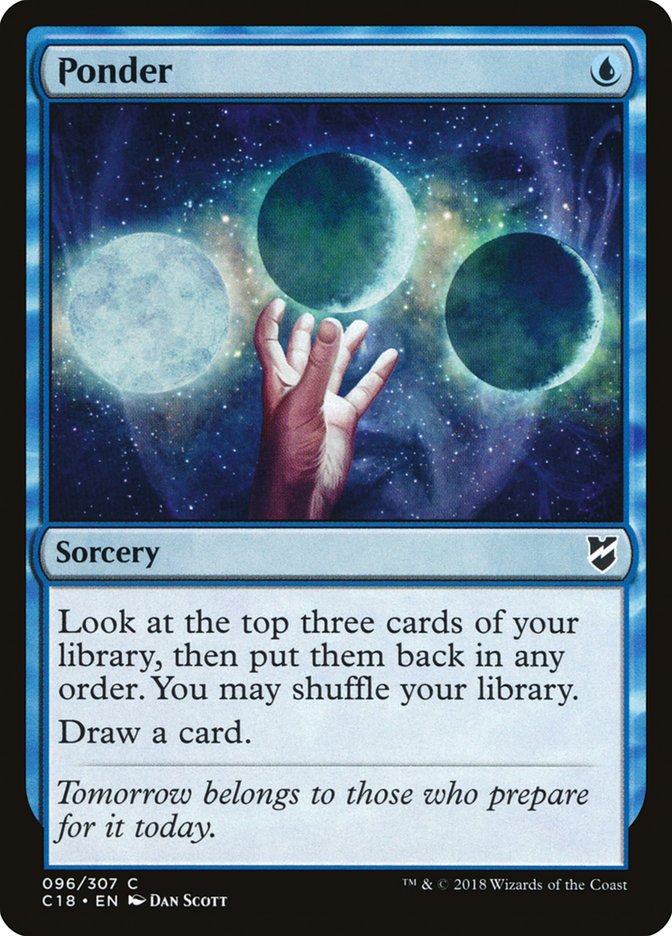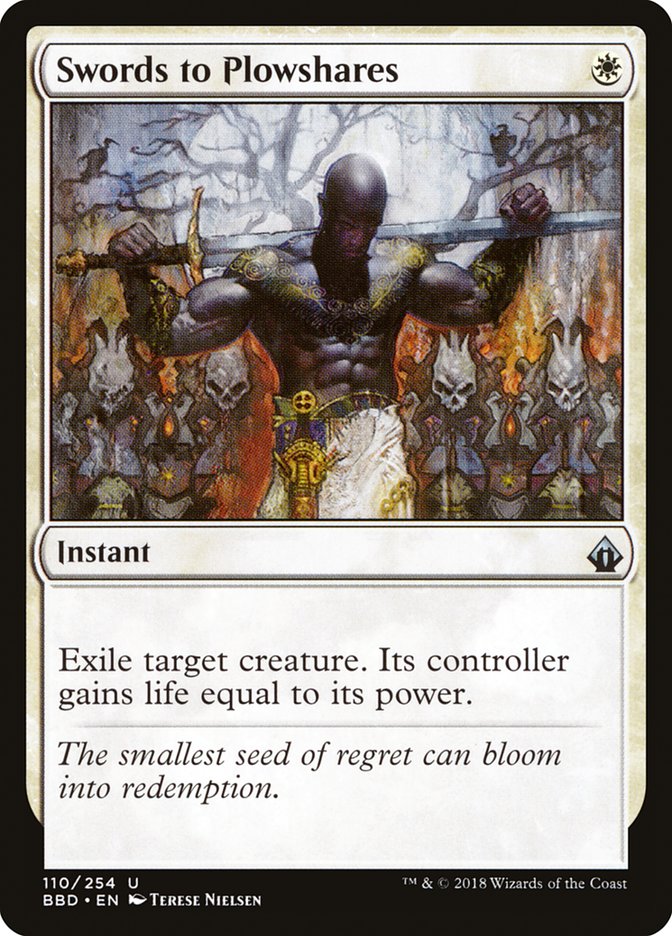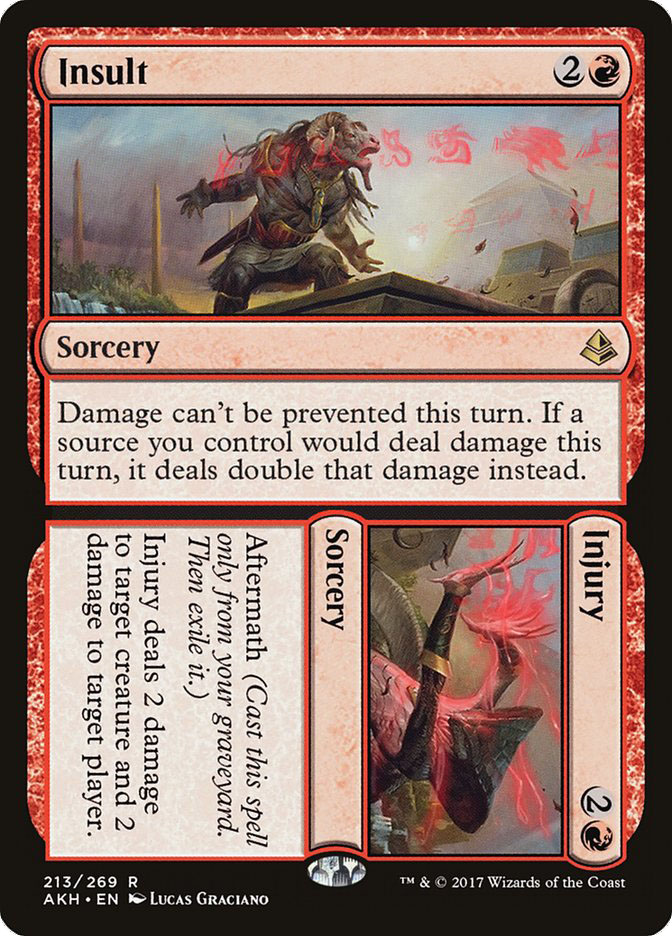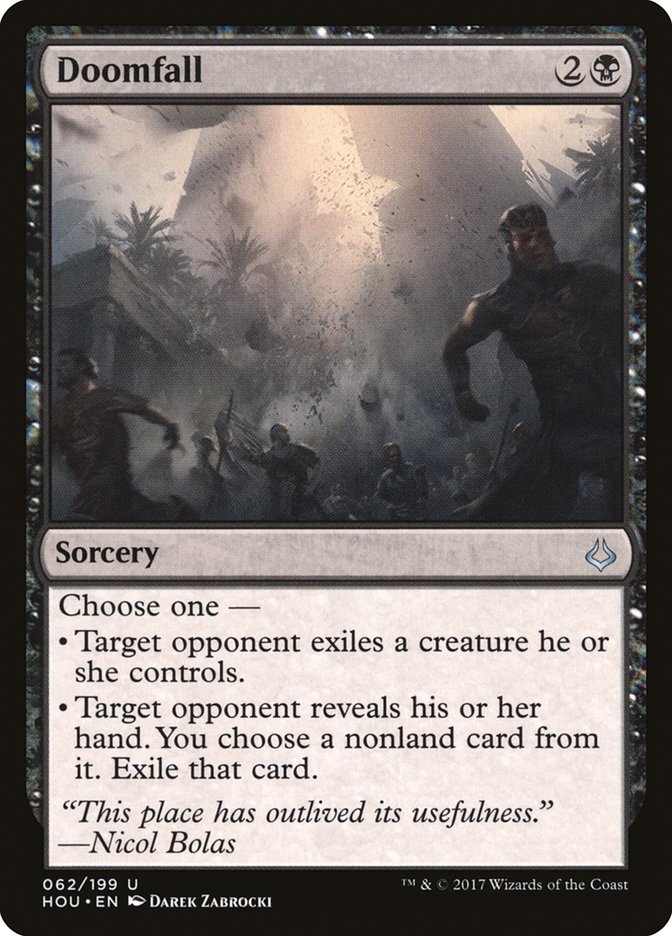With two Grand Prix this weekend in Richmond, it’s time to give you the
perfect 75 for both. Let’s start with Legacy:
Creatures (12)
Planeswalkers (2)
Lands (16)
Spells (30)

I’m beyond excited to play U/W Stoneblade in Legacy at Grand Prix Richmond.
I got super lucky to find the list too as Matt Sperling happened to tweet
that he went 5-0 at a local shop with it. After seeing that tweet, I
instantly fell in love.
This is my current list. Prob will write an article soon or
make a video, as I’m having a lot of fun with it and it’s
quite different from the Gurmag Angler direction most delver decks are
heading towards right now. pic.twitter.com/YoUF88nsjd—
Matt Sperling (@sickofit) August
13, 2018
After seeing Sperling’s tweet, I messaged him privately to talk him off the
ledge that is Stifle. I absolutely hate this card, and here’s what I wrote
in my tournament report for Pro Tour 25th Anniversary.
Stifle
overperforms at lower levels of competition and generally lends itself
to poor strategies based solely on winning the die roll and getting
paired against decks with unusually low land counts. I tried
Stifle
in Temur Delver for a small period of time and quickly dismissed it
since it made sideboarding difficult and hurt my ability to play long
grindy games in midrange mirrors, which are still a very real portion
of the Legacy metagame.
I begged him to play four copies of Spell Pierce main and if I was playing
a Delver deck of any variety, I wouldn’t leave home without them. Spell
Pierce play well into your core strategy of mana denial and tempo where you
can capitalize on any potential hiccup in the opponent’s draw and piling on
a Spell Pierce after a successful Daze or Wasteland can make things
progressively worse for our opponent.
I also like Spell Pierce when entire swaths of the metagame are dedicated
to casting Blood Moon on turn 1. I feel super calm and comfortable in these
matches when I win the die roll and I have access to Spell Pierce, Daze,
Force of Will, and the ability to have effectively a ten-card opening hand
with Ponder and Brainstorm. I haven’t run the numbers myself, but when I
have twelve cards I can use turn 1 to stop Blood Moon and an additional
eight that provide me three redraws at Daze and Force of Will, I know I’m
adequately protected.
Force of Will and Daze are clearly better than Spell Pierce, but I like to
think of my deck as having a strong cohesive gameplan.
This is the best card in Legacy and if you don’t play four, you’re not
trying your hardest to win.
Although we were only on camera at #PT25A
for five seconds and the advantage bar only went in one direction we did
still get this sweet graphic. Look at those numbers! 13 Pro Tour Top 8s,
60% winrate, and over $1,000,000 in winnings. pic.twitter.com/ygOfHnkrmg—
Owen Turtenwald (@OwenTweetenwald) August
12, 2018
I love this tweet for many reasons, but I’m showing it to you today because
it illustrates a clear point; Legacy is the most skill intensive format in
Magic. Full stop. The reason is Brainstorm and if you’re a skilled player,
you must play it as it allows you to keep more opening hands than you would
normally be able to with non-blue decks. This includes hands that are light
on lands or interaction and it mitigates mana screw and mana flood, it’s a
good lategame topdeck and it helps you draw your sideboard cards more
often.
I was joking in the testing house: “How is anyone going to beat Reid Duke
if you give him four Brainstorm?” He’s so much less likely to lose to the
inherent randomness in Magic and he now has a ton of agency over his
opening hand.
This helps keep my blue card count high for Force of Will while also just
being through the roof on power level. I often tell myself Ponder is just ”
U, Sorcery, look at the top four cards of your library and hope one of
them is Wasteland.”
If I don’t see Wasteland or some other type of desirable card for the
matchup, I’m shuffling and drawing a random card. This also does many of
the things Brainstorm does in a less effective manner and if I was ever to
play a Delver deck in Legacy again, I would always play four copies of both
Brainstorm and Ponder.
I’m safe saying the core of the deck is four copies of Daze, Force of Will,
Ponder, Brainstorm, and Delver of Secrets. I like to have a plan for all
types of matchups so I feel pre-sideboarded against combo with four copies
of Spell Pierce and similarly prepared for creature matchups with four
copies of Swords to Plowshares. Swords to Plowshares is slightly too
efficiently costed, and everyone knows it and the only reason it isn’t more
popular is because white is unpopular in the current metagame. It’s also
exactly where you want to be in a format filled with Death’s Shadow decks
as the new flavor of the month.
Stoneforge Mystic has always been my two-drop of choice because it’s robust
against other creature decks while also providing card advantage. It’s fun
and fancy to play with Baleful Strix, but Stoneforge Mystic was Baleful
Strix before it was cool. I feel like an old man saying, “We had to walk up
hill both ways to school and we liked it!” but that’s honestly how it was.
Back in the day, we didn’t have Baleful Strix to give us a random card, but
we had Stoneforge Mystic, and when you got Batterskull and they killed
Stoneforge Mystic, your new mission in life was to find Brainstorm to put
the equipment back in your library in exchange for a random card and
shuffle as soon as possible.
I’ve used Stoneforge Mystic to fetch the same Batterskull three times in
the same game before, but the thing I love most about the Kor Artificer is
that you put your opponent to the test immediately. If the opponent has
removal, you put them at card disadvantage since you’re up a card (the
Batterskull you found) and if they don’t have removal, a fair portion of
the field just concedes on turn 3.
GP Washington DC 2013 was my first opportunity to play with True-Name
Nemesis in sanctioned play, and I was playing totally cold with it. I knew
I wanted a threat that was resilient to removal, and I was playing Geist of
Saint Traft previously, but I replaced Geist with True-Name the day of the
event and never looked back. It’s pretty lucky that even five years later,
True-Name Nemesis is still a commonly played card. Even then, I had an eye
for talent.
My final slots are rounded out by two copies of both Snapcaster Mage and
Jace, the Mind Sculptor, but I’m not sure how I feel about it. With the
banning of Deathrite Shaman, the biggest winners in Legacy are graveyard
strategies, and Snapcaster Mage has certainly seen better days. It’s now a
staple of Legacy, and the entire Grixis Control deck is based around
playing four. I had to replace the Lightning Bolts with something since the
metagame is saturated with midrange and control decks, so a little bit of
lategame card advantage makes perfect sense.
I’ll admit the sideboard is a bit of a mess, but I studied some of my old
Legacy lists and in 2011, I was fond of playing Oblivion Ring in my
sideboard. Since then, Council’s Judgment has been printed, and it works
beautifully with Snapcaster Mage, providing an answer to opposing copies of
True-Name Nemesis. The headliner here, though, is Back to Basics which
simulates the effect of Blood Moon but for an entirely different strategy.
The rest is fairly straightforward: just a little bit of sauce at converted
mana cost one or two with a priority for instants and sorceries which can
be used multiple times in a game, thanks to Snapcaster Mage. I could
agonize, for example, between Seal of Cleansing and Disenchant and still
never know the correct option, but because of Snapcaster, picking the
instant is easy.
Next up we have Excalibur.
Creatures (24)
- 2 Pia Nalaar
- 4 Bomat Courier
- 4 Scrapheap Scrounger
- 2 Kari Zev, Skyship Raider
- 2 Glorybringer
- 2 Hazoret the Fervent
- 2 Soul-Scar Mage
- 2 Rekindling Phoenix
- 4 Goblin Chainwhirler
Planeswalkers (3)
Lands (11)
Spells (22)
Sideboard

R/B Aggro is the best deck in Standard and everyone knows it. The Standard
metagame has become either decks that are R/B Aggro or decks that are built
under the false belief that they beat it. I don’t have it in me to even change a single card from the list Logan Nettles used to win
Grand Prix Los Angeles recently. I’d also like to mention that I love his
story as the weekend he won the GP, he was leading the trophy race in the
Standard Competitive League on Magic Online, and I think he got there
testing and tuning R/B Aggro the whole time. He’s living proof that it
takes hard work and dedication to win at Magic and there are no shortcuts.
It’s even more heartwarming that he did it with good old-fashioned
midrange, because traditionally midrange has a stigma attached to it where
people believe it’s inherently low power–but this red deck has all the
fixings.
At Pro Tour Dominaria, I played two copies of Abrade, Lightning
Strike, and Unlicensed Disintegration, and here we see Logan with the same
mix but swapping out Cut for Lightning Strike. With the introduction of
Sai, Master Thopterist and Steel Leaf Champion as major players in the
metagame, this is a great change. It’s not even clear to me it was optimal
for us to forgo Cut in the first place; it’s dirt cheap on the front side
and the aftermath reminds me of Kessig Wolf Run. Additionally, Cut has
immense value against Bant Nexus because it can cause life loss, which
dodges the Fog effects and you’re happy to discard it to Bomat Courier,
Hazoret the Fervent, or cast it on a creature you control, which you no
longer care about (which is all of them once you’re fog locked).
I also went down from three copies to two on Heart of Kiran because the
decks that fold to it immediately are played much less and it doesn’t die
very often to the legend rule. Even though this list only has two copies of
Hazoret the Fervent, I still like to think of this deck as a classic red
strategy, and Hazoret alongside Bomat Courier provide great incentive to
empty your hand as quickly as possible. Having cards that are dead less
often just makes perfect sense and this list cares a lot about not having
cards in your hand you can’t use.
I hate the idea of playing with a basic Swamp in my sideboard, but it makes
sense to me in theory. If you add four Duress and one Doomfall, you only
have eleven black sources instead of twelve with the additional Swamp.
I’m also conflicted on Insult as an anti-Fog measure. It’s the highest
upside card to attack Bant Nexus with by a lot since it can counter a Fog
while also doubling your damage, but it’s weak against the new hotness I’ve
seen: Settle the Wreckage. Settle the Wreckage continues to be an amazing
card, and SCG Baltimore last weekend proved that it’s good enough for older
formats as well. I’d feel like a damn fool registering two copies of Insult
in my sideboard and cast it going for the kill only to not have my damage
doubled… but all my creatures exiled. It’s possible Sorcerous Spyglass is
a better anti-Bant Nexus option since the entire deck hinges on having an
active Teferi, Hero of Dominaria, and Spyglass is also a nice option
against God-Pharaoh’s Gift decks.
These are the exact same 75 cards I plan to play in both the Legacy and
Standard Grand Prix in Richmond this weekend. I know it’s deep in the heart
of Virginia, aka SCG territory, so if you see me I don’t bite. Feel free to
say hello and I’ll have a Sharpie on me so I can sign any cards, playmats,
and deckboxes. Good luck this weekend!









